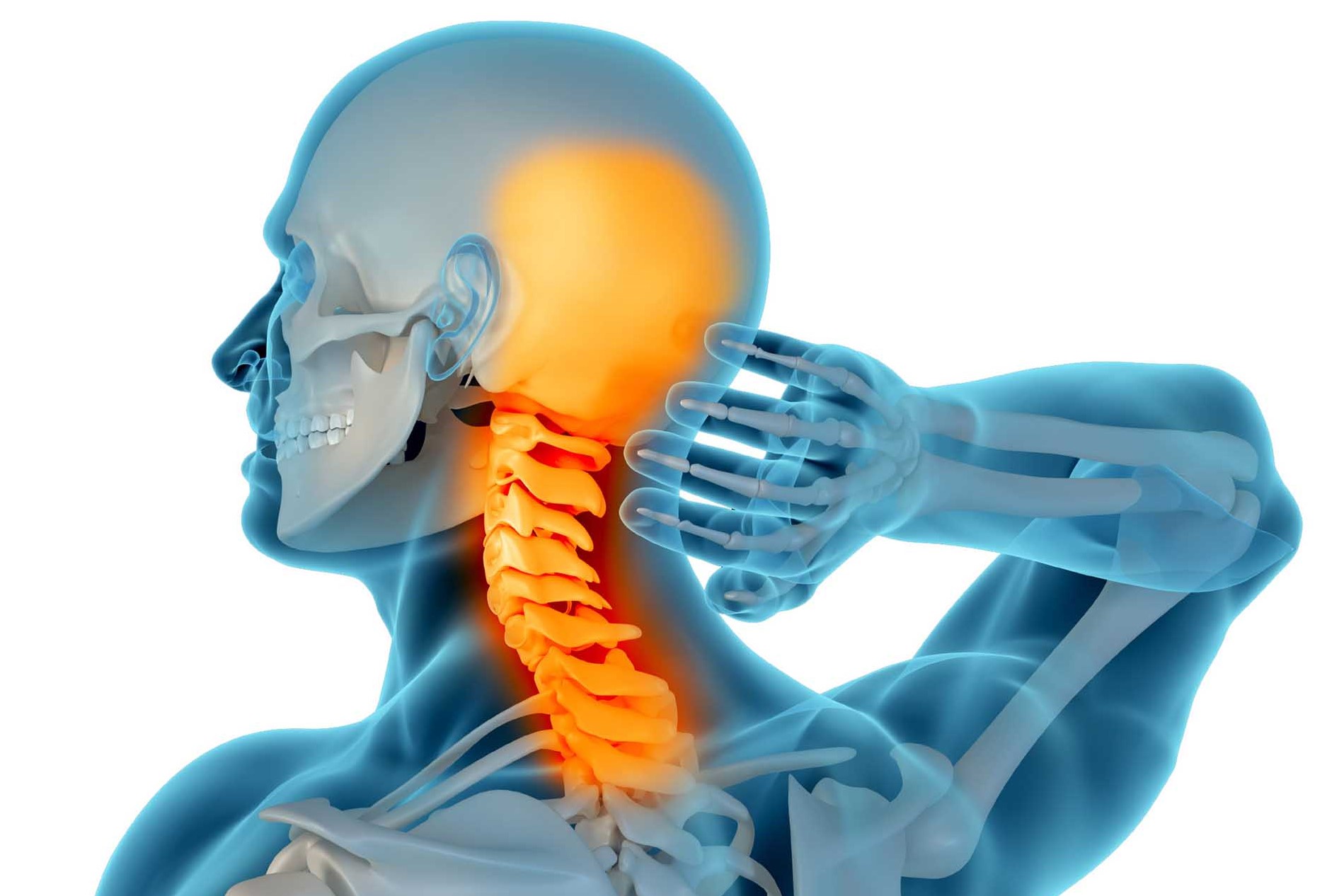
What is cervicalgia? The importance of correct posture at work or while sleeping
A large number of people complain of neck pain (cervicalgia). Much of this pain is caused by incorrect posture while working, sleeping, driving, or is the result of accidents that have altered the delicate structure of the spinal column
In some cases they may be the consequence, often temporary, of surgery on the delicate anatomical structures that are located in the neck.
In the confined space of the neck, numerous organs and structures are in close contact: fundamental blood vessels and elements of the nervous system, such as the common carotid artery, the jugular vein, the vagus nerve, numerous muscles, the first tract of the respiratory and digestive systems, and it is home to the thyroid and parathyroid glands.
The first two cervical vertebrae have anatomical peculiarities that allow the head great mobility.
Cervicalgia should not be underestimated and when one is afflicted by it, one should seek medical advice to rule out the presence of more serious pathologies.
The neck has very extensive range of motion and is one of the most delicate joint complexes in the body.
What causes cervicalgia?
Cervicalgia develops due to exaggerated and incorrect mechanical stress on the vertebrae, intervertebral discs, ligaments and muscles.
This stress may occur abruptly and suddenly, e.g. following whiplash after a car accident, or it may be due to prolonged joint overloads, caused, for example, by incorrect posture or holding particular positions during work.
Pain can also develop as a result of degenerative processes, including degeneration of intervertebral discs and arthrosis of the vertebrae. Often these causes are concomitant with each other.
When neck pain is more severe, it may be caused by herniated discs, which can compress nerve roots.
More rarely, some infectious, vascular, tumour, neurological or rheumatological problems can be recognised as the cause of cervicalgia.
In these cases, however, neck pain is not the main symptom and the diagnostic pathway is often evident from other clinical manifestations.
What are the symptoms of cervicalgia?
Cervicalgia manifests itself as localised pain in the neck, predominantly in the back, which can radiate down the muscles of the spine and shoulders and, in more severe cases, down the arms.
Can cervicalgia be prevented?
If neck pain is caused by muscular problems, it can be prevented by getting used to maintaining a correct posture, with the neck straight, in line with the body, and avoiding bending the head forward.
During work, for example when sitting at a desk or working at home with a computer, it is useful to check your posture often and adjust it accordingly.
It is also useful to avoid lying on your stomach with your head turned to the side when resting at night.
Diagnosis
In order to diagnose neck pain, the physiatrist will subject the patient to an examination in which he or she will gather information about the patient’s medical history and at the end of which he or she will assess the need for radiological examinations.
Treatments
In the case of pain caused by faulty posture, stress, poor physical fitness, i.e. of an established ‘benign’ nature, there are appropriate exercises to reduce the extent of the pain, which can be performed by the patient at home or in a gym.
To these must be added a modification of one’s posture.
If the pain is acute, however, the specialist is likely to prescribe anti-inflammatory drugs, sometimes in combination with muscle relaxants.
Another useful treatment is antalgic mesotherapy, which involves the subcutaneous injection with a very small, thin needle of small quantities of medication that act directly on the affected part, avoiding or reducing the intake of drugs by mouth.
In specific cases, the physiatrist may deem it appropriate to perform spinal manipulations and/or prescribe specific massage therapy or physiotherapy treatments to accompany certain physical therapies. In rare cases, a surgical evaluation may also be necessary.
Read Also:
Emergency Live Even More…Live: Download The New Free App Of Your Newspaper For IOS And Android
Cervicalgia: Why Do We Have Neck Pain?
Cervical Stenosis: Symptoms, Causes, Diagnosis And Treatment
Cervical Collar In Trauma Patients In Emergency Medicine: When To Use It, Why It Is Important
Headaches And Dizziness: It Could Be Vestibular Migraine
Migraine And Tension-Type Headache: How To Distinguish Between Them?
First Aid: Distinguishing The Causes Of Dizziness, Knowing The Associated Pathologies
Paroxysmal Positional Vertigo (BPPV), What Is It?
Cervical Dizziness: How To Calm It Down With 7 Exercises


